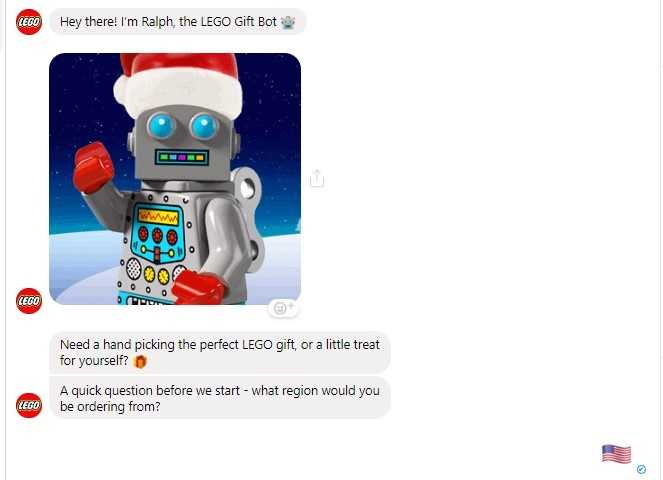Looking to spice up your content marketing? Here are 5 tips from the MTA experts on how you can tell stories more effectively in this time of interactive content.
Storytelling is the oldest form of communication. From petroglyphs to 1080p videos, we have sure evolved tremendously, but the fundamentals of storytelling remain the same. Marketers routinely use storytelling to appeal to the emotional side of their audience to influence purchase decisions.
In this article, we present 5 tips from the MTA experts on how you can enhance storytelling in the age of interactive marketing.
1. Follow the Right Format for a Compelling Narrative
Ludwig van Beethoven composed Für Elise in 1810 to propose to Therese Malfatti. Although Therese did not accept the proposal, the bagatelle (a short music composition) became immortal due to its structure. The song follows the perfect format for storytelling. It starts with a simple motif, builds tension (listen to the track at 1:33), resolves it and goes back to its original motif while hooking listeners from the get-go.
In an interview with MTA, Henry Bruce (SVP Marketing, Contently) said, “Joe Lazauskas, director of content strategy at Contently has four keys to storytelling that he uses like a checklist: tension, fluency, relatability, and novelty. A trend we’re really interested in is how storytelling is starting to pop up across the organization, not just in marketing.”
Using these four characteristics is crucial to forming the foundation of a great story.
2. Use AR to Deliver Better CX
Released in July 2016, Pokémon GO instantly became a sensation due to its use of augmented reality mixed brilliantly with nostalgia. AR offers the perfect way to convey stories through part-real and part-virtual media, leading to increased audience engagement.

Explaining how AR can address information asymmetry and deliver a deeper product experience, Clifford Gross (CEO, Lucyd) explains, “AR glasses, headsets, and applications have the potential to help brands, retailers, and e-commerce companies give consumers an even deeper look at their products throughout all stages of the buyer’s journey.” He further says, “Smart marketers will be able to use AR to provide the right amount of transparency and helpful information to users in real-time, to make them feel like they have all the information they need to make an informed buying decision.”
Also Read: How Agencies Can Balance Creative Storytelling and Digital Analytics for Brands
3. Utilize 360-degree and Interactive Videos
World Wrestling Entertainment, Inc (WWE) is a well-known American media and pro-wrestling company. Since we’re talking about videos, WWE is among the top 10 most-subscribed channels on YouTube, due to its astonishing rate of churning out new content and constant innovation. Here is an example of a 360-degree video that was released by WWE almost 3 years ago:
The massive success of WWE lies in their approach to prioritizing video over other forms. While speaking with MTA, Guy Atzmon, SVP of Product & Creative, SundaySky said, “Start to treat video as a strategy rather than a tactic. Planning out an annual video cadence with multiple channels, sub-audiences and specific goals for each touchpoint will help build a creative and productive execution plan that will maximize time and money, enabling optimal re-use across channels.”
4. Use Data Visualization to Tell Stories
Do you know that during the holiday shopping season:
- 52% don’t want to see holiday ads till November
- 50%+ will wait till December to buy gifts
- 17% plan to do their shopping before Thanksgiving
Now, if you are a casual reader, you’ll probably scroll past the above stats without reading them, but would you stop scrolling if they above stats are presented like this?

Full Infographic can be found here.
Of course, you would! Because visual representation is much more easily comprehensible than a barrage of text and numbers. Emphasizing the importance of interactive content for audience engagement, Nadjya Ghausi (VP of Marketing, Prezi) says, “An interactive approach to sharing data helps to simplify complex information, so audiences can better absorb it. And it makes the data itself a story. That’s especially important, because even if audiences aren’t likely to remember all of your data points they will remember a great story you told them about those data points.”
Also Read: Why Storytelling is a Marketer’s Most Powerful Tool
5. Use Chatbots for Conversational Storytelling
Lego has an amazingly witty chatbot called Ralph that lets you choose the right gift. I was trying it out to see how it works, and here is how the conversation went:



And so on…
Chatbots offer a great opportunity for brand storytelling that is consistent with the brand tone, voice and persona. Although they are largely used for order processing and recommendations, thanks to conversational commerce, it won’t be long before chatbots expand into other areas as well.
It is necessary to simplify basic interactions for chatbots to provide great service. Katie Hickey (Marketing Manager, Usabilla) says, “The strength of chatbots lies in the convenience they provide. In an ideal situation, a customer with a simple request or question can contact a chatbot to get an immediate solution. Since more than half of customers are likely to ditch an online purchase if they can’t find a quick answer to their question, chatbots used correctly can deter cart abandonment.”
In Conclusion
Although the formats of content and communication may change, the fundamentals of storytelling will always remain the same. Hope these 5 ideas inspire you and spur your storytelling to new heights.
What are your thoughts about integrating storytelling into your 2019 marketing plan? Let us know in the comments below!






